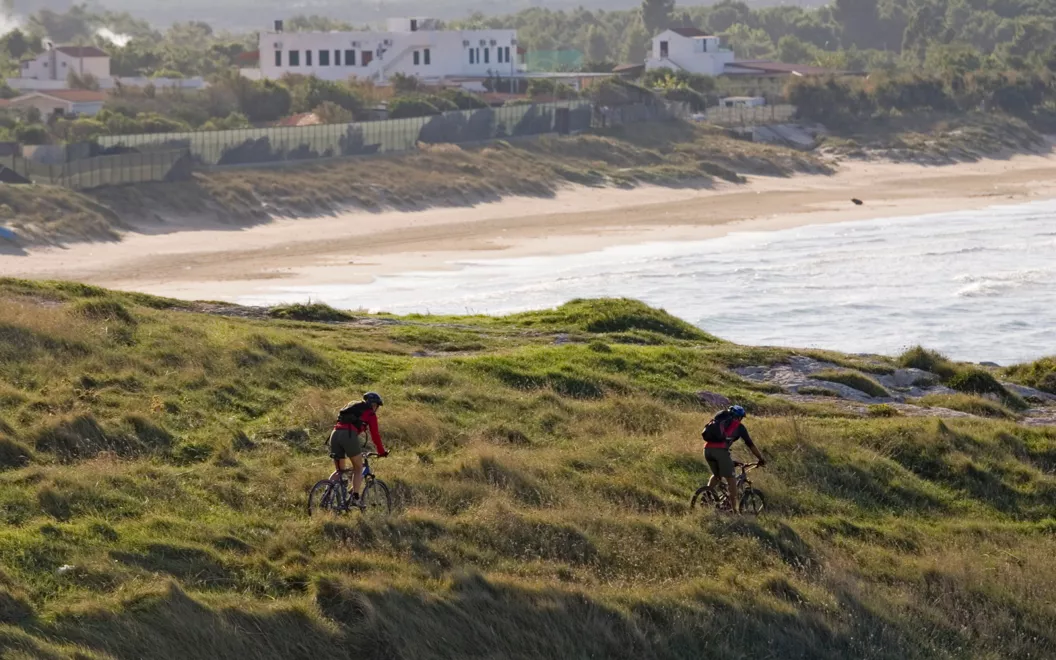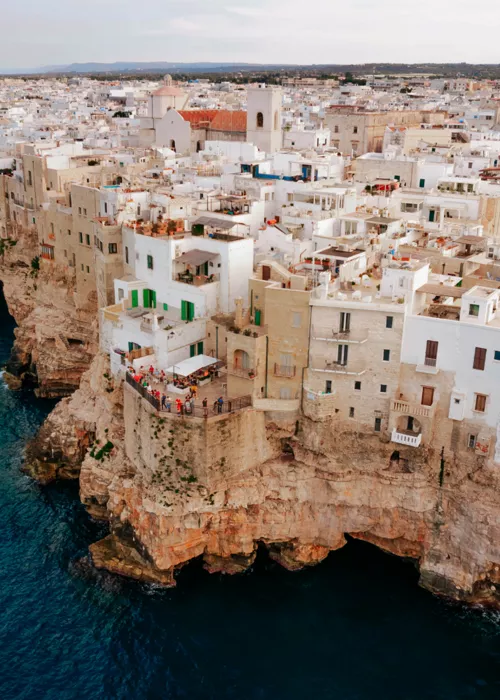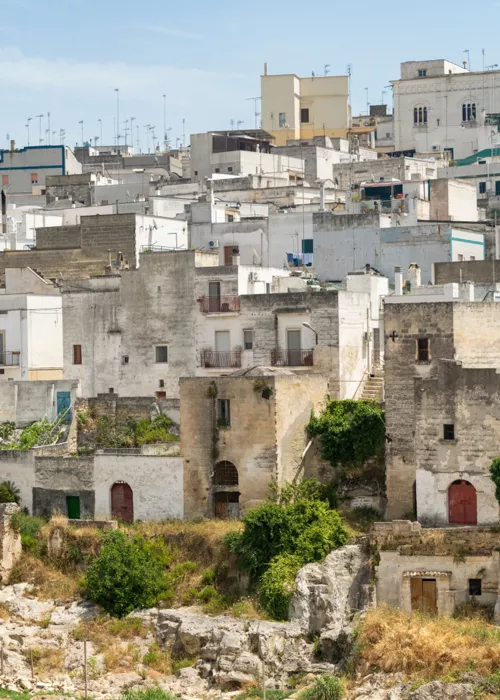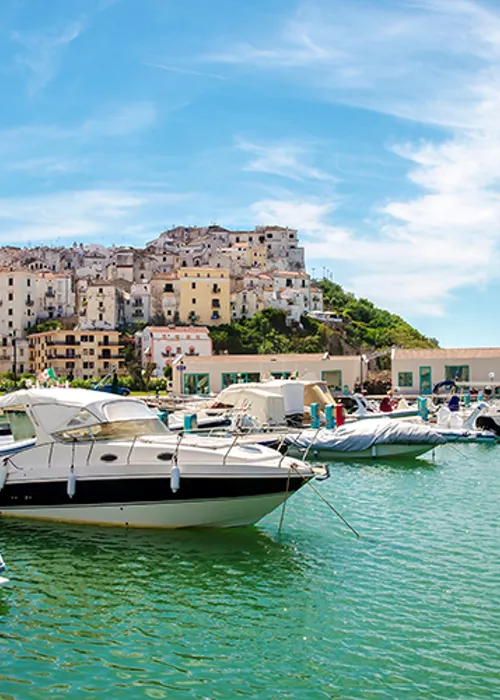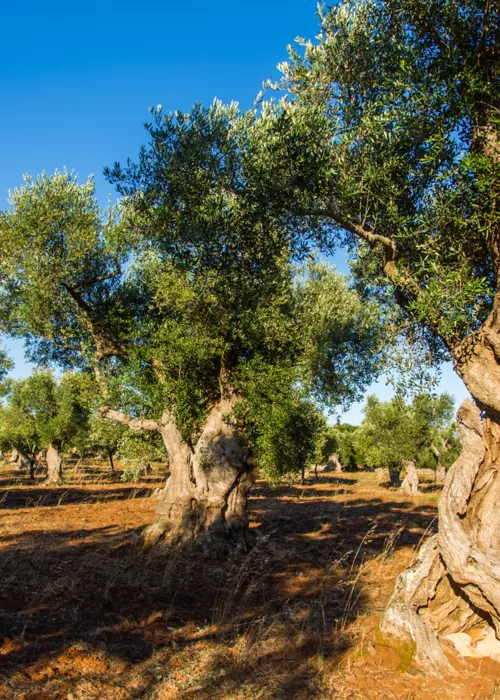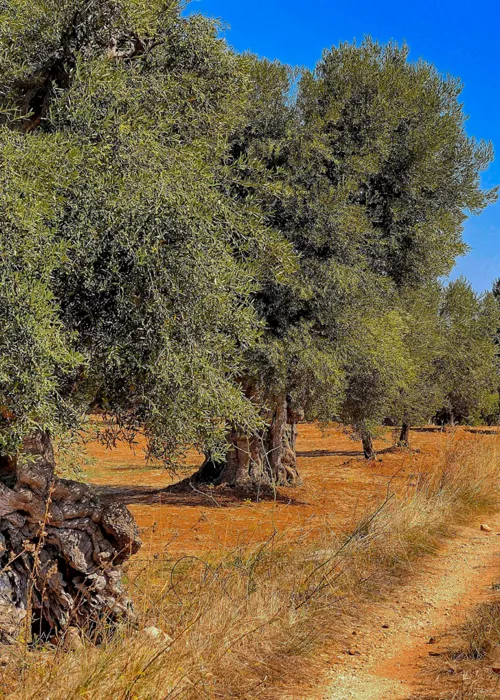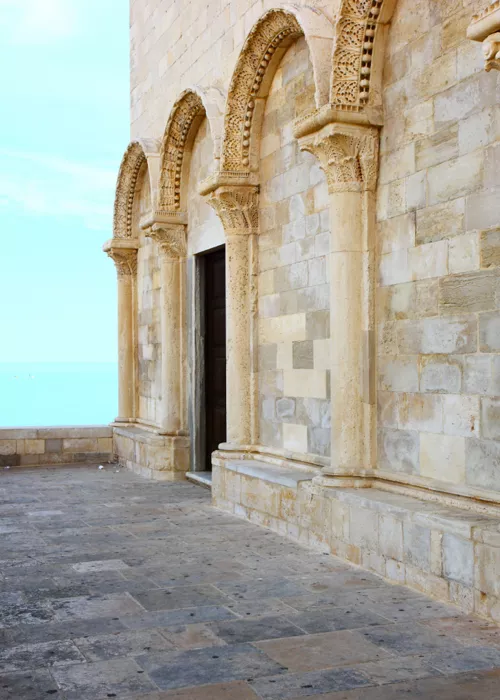Peschici

In Peschici, you are greeted by a perfect spectacle. If you arrive during the day, you will be astounded by the sight of the white grid-like houses, clustered together to cling to a 90-metre cliff overlooking the sea. If you arrive in the evening, you will be enchanted by the play of light and reflections of the town reflected in the water. And then, in front of the houses, the wide, sandy bay of Peschici opens up, which, outside the high season, is a little-visited place. Here, in the ancient Slavic-founded Pesclizzo, the best thing to do is to enjoy the walk along the beach to the harbour and then climb the stairs to the town, where the first murals will already be catching your eye. There are some with portraits, with boats or with views of the sea. One is dedicated to the half-Apulian, half-Istrian artist, Romano Conversano, who fell so in love with Peschici that he bought and restored the castle to make his atelier there. The work is by three artists, Silvestro Regina, Day Gilles Trinh Dinh and Michel Xhavo, who, in the hot summer of 1993, were guests of the castle: to regenerate the area after neglect and the area below being used as a landfill, they created a mural along the castle fence. For the view, look out over the viewpoint near the castle and from here, choose to walk along the main streets, Via Castello and Via Colombo in the direction of the new city, or climb up the winding and narrow alleys. Amidst the houses with their characteristic half-hipped roofs, arches and churches of the old town, an ancient, Mediterranean atmosphere, with a dash of Greece and a hint of Tunisia, lingers in the air, and there are many small shops and pleasant restaurants. Behind the small harbour, on the other hand, is the Abbey of Calena, or rather the ruins of what remains of it, but which testify to its importance in the Middle Ages.
Rodi Garganico

From Peschici, take the coastal road through the Marzini pine forest, which leads to the beautiful Tufare beach, and it then becomes flat in the stretch from San Menaio to Lido del Sole, except for a short climb to Rodi Garganico. A very picturesque town, although less prosperous than its two sisters Peschici and Vieste, Rodi Garganico is set on a cliff overlooking the sea with bright white houses silhouetted against the blue, a network of winding alleyways, sometimes descending to the sea, steep staircases, arches and noble palaces. Worth a visit are the churches Ss. Nicola di Mira, Ss. Peter and Paul, the oldest in the city, and the Baroque Shrine of Our Lady of Libera.
Do not miss the beautiful citrus-grown gardens scattered around the city, which is located in the centre of a citrus fruit production area, with lemons that can be seen further inland (particularly the Femminiello del Gargano PGI lemon). And while citrus fruits used to be the town's main source of income in the past, today Rodi is mainly known for its seaside tourism, which is not surprising given the expanse of sandy beaches that stretch both east and west of the town. The beach of San Menaio, for example, with its fine sand extending for over two and a half kilometres to the village.
Lake Varano
From Rodi Garganico, between watchtowers and characteristic trabucchi (ancient fishing tools), you head towards Lake Varano. Seen from above, its waters merge with those of the sea, but it is separated from the Adriatic by a thin cordon of 10 kilometres, along which the cycle path runs. The road running along the isthmus laps a fine sandy beach called Isola di Varano, which became a nature reserve in 1977 on account of its coastal dunes, monumental eucalyptus trees, pine forests and maritime pines. You have to imagine it, rather than as a real lake, as a salty lagoon, with a Mediterranean scrub environment, with dunes and thousands of water birds, resident and migratory. The lagoon can be traversed by bike with a ring route drawn along the banks bordered by reeds, olive groves and pine forests, with mountains visible in the distance.
A must-see near the lagoon is the impressive Grotta di San Michele (St. Michael's Cave), linked to the worship of the archangel and whose water trickling from the walls is believed to be miraculous for the eyes. Another place to which miraculous powers are attributed, this time due to drought, is the Santuario del Santissimo Crocifisso sanctuary, on the eastern shore of the lake. Finally, on the lagoon rises Cagnano Varano, clinging to a rocky cliff overlooking the lake with a view that extends to the sea.
Lake Lesina

You can still cycle between land and water, along quiet secondary roads to the final stage, Lake Lesina. Along the way you can admire ancient watchtowers, such as Torre Calarossa and Torre Mileto. Smaller and decidedly shallower than Lake Varano but no less fascinating, Lake Lesina is separated from the sea by the Bosco Isola nature reserve, a strip of sand, dunes and Mediterranean scrub 22 kilometres long. Its waters are shallow, full of fish and placid, only slightly rippled by the passage of sandali, the typical wooden fishing boats. The scenery of the place is completed by the trajectories of the kitesurfers gliding over the water, the flight of birds and the silhouettes of the wooden stilts reflected in the lagoon from which fishing nets are hung. The eastern part of the lake is protected by the Lake Lesina Nature Reserve, established in 1981 as an animal repopulation area: here, many birds live undisturbed. A wooden walkway over the water starts from Lesina to reach the islet of Clemente, once home to a small 12th-century abbey, built on the foundations of an ancient Roman villa.


